
University of Split
ABSTRACT: The Adriatic Sea is of critical importance for Croatian tourism and the economy as a whole, which is why special attention must be paid to its protection and security. The most important aspects of the security and protection of the Adriatic Sea within which concrete preventative measures are needed to be taken are: ecological protection, protection of offshore gas plants and installations and the safety of cruise tourism. Although some security measures have been implemented thus far, there still remains plenty of room for their urgent upgrading and alignment with real security needs. In this paper, we identified the most important security shortcomings in all the listed segments, presented scenarios of existing and other possible security threats, and provided suggestions and concrete measures to raise the level of security of the Adriatic Sea.
KEYWORDS: Adriatic Sea, security, tourism, ecology, offshore, gas plants and installations, cruises, protection.
Introduction
In this paper, we will consider some of the possible scenarios of endangering maritime security. We divided the research into three sections. In the first section, which is also the main section of this paper, we will consider maritime incidents and their consequences in greater detail, with distinct emphasis on ecological pollution of the sea. In the second section we will briefly describe the current protection (safety/security) situation of gas plants and installations in the Croatian part of the Adriatic Sea, and we will highlight the main problems and proposals for raising the level of their security. In the third section, we will also briefly analyze the security of cruise ships in Croatia and indicate the main problems and proposals for raising their level of security. The second and third section of this paper are of great importance for the energy independence of Croatia and its economy, which require much more space for elaboration, meaning that we will publish them as separate scientific research in the following numbers of this scientific publication. Security is socially constructed, for different actors it has a different meaning (Malik, 2015), whereby the content of the concept of security changes in the historical and social context (Williams, 2008). In an objective sense, setabcurity measures the absence of threats to acquired values, while in a subjective sense it measures the absence of fear that such values would be endangered (Wolfers, 1962). This is a “connected concept” (national security, economic security, social security, ecological security, maritime security, etc.) which always connects a concrete reference object, activity sector and a special way of thinking about politics (Buzan, Hansen, 2009:10). Maritime traffic is the bloodstream of European prosperity. Transport of energy, fisheries, environment and climate change – all depend on and have close relations with maritime security in one way or another (Drent et al 2013:25). Security as a fundamental value and prerequisite for the development of society and economy in all its segments are not, and should not be projected as expenditure and a reactive system, but instead as a proactive developmental factor and the underlying developmental resource of the country, its society, economy and its citizens.
In the area of sovereignty and sovereign rights of the Republic of Croatia, lie the most valuable and most sensitive natural systems of the Adriatic Sea, which are its coasts and islands. Comprehensive security of the Adriatic Sea is one of the most important national security priorities, which is why it represents our special scientific and professional interest.
As a research tool for empirical research focused on studying the contemporary phenomenon “within its real life context, especially when boundaries in between phenomena and contexts are not obvious” (Yin, 2007:24), case studies will be used. Case study “as a research strategy contains a comprehensive method whose components are the logic of design, data collection techniques, and specific data analysis approaches” (Yin, 2007:25). In the research, we also used the participatory observation method, which is the method by which a researcher participates in the everyday life of people whom they are studying, openly or in a disguised form, observing when things happen, making this an efficient method for immediate determination of the situation (Tadej, 1983)..
Maritime Accidents
Maritime accidents in the Adriatic Sea are not uncommon. This is supported by the data on the number of interventions during three consecutive years, which are seen in the following table.
Table 1: The number of interventions at sea by year
The accidents in the Croatian part of the Adriatic Sea are not related to only smaller boats, but to larger ones as well, of which we have several.
Table 2: The breakdown of larger ships in the Adriatic Sea by year.
|
2008.
|
Capadocia, Serine
|
|
2009.
|
Marko Polo
|
|
2010.
|
Orebić
|
The question arises - why did the listed accidents occur? Every case, of course, needs to be considered separately, which goes beyond the scope of this paper. In principle, we can say how accidents can happen for a whole variety of reasons, from which we mention some:
- Errors in sensory systems
- Errors in interpretation of data
- Human factor errors (inexperience, etc)
- Inadequate surveillance of the security at sea
Apart from the causes of the accidents, we are particularly interested in the consequences which may also be substantial. Therefore, in this paper we have decided to elaborate the scenario of a larger pollution of the sea with mineral oils, resulting from maritime accidents.
We will analyze the Croatian response to a scenario of a 2000 cubic meters oil spill in the sea.
Figure 1. Photographs of three larger ships which experienced accidents in the Adriatic Sea.
A. Analysis of major security and strategic documents related to protection of the sea
Prior to the elaboration of the scenario itself, we conducted an analysis of the most important security and strategic documents which are related to sea protection.
The Constitution of the Republic of Croatia states that the sea, the seaside and the islands are of particular cultural, historical, economic and ecological importance to the Republic of Croatia and have special protection.
Marine development strategy and integral maritime policy of the Republic of Croatia for the period 2014.-2020 states that intense maritime transport in the pool of the Adriatic Sea indicates a significant risk for accidents, and thus potentially a powerful impact on the marine environment. Given the geomorphologic features of the Adriatic as a semi-enclosed marine pool, the impact of an accident may be detrimental to the Croatian economy, which is essentially focused on coastal and offshore activities. For this reason, the Republic of Croatia as a coastal state of the Adriatic Sea has to pay special attention, in corporation with other countries, to the protection of the Adriatic Sea in terms of its use, as well as the preservation.
The strategic plan of the Ministry of the sea, transport and infrastructure for the period 2017-2019 states that the mission of the Ministry is to create conditions and build up on capacities that will ensure the production of quality laws and other regulations and their implementation regarding maritime security. Furthermore, in the same document, within the chapter Safe Navigation by sea, it is stated that the Ministry will continue to maintain and develop an adequate level of maritime safety and pollution protection in accordance with both international and European standards as well as the needs of maritime traffic participants. As one of the more important goals of the maritime developmental strategy and integral maritime policy of the Republic of Croatia for the period 2014-2020, in which a number of international and European strategic guidelines have been taken into account, the objective 3.2.3. - reduce the harmful consequences of pollution from maritime facilities has been stated. As a way of achieving this goal, measure 3.2.3.2. - securing a special ship for large scale pollution, as well as renewing and modernizing a fleet of ship-cleaners, has been taken into consideration. For the purpose of achieving the goal of reducing adverse effects caused by pollution from maritime facilities, measure 3.2.3.3. - ensure the availability of equipment and devices for the operation of pollution in the economic zone of the Republic of Croatia, territorial sea, and inland waters.
The SWOT analysis clearly states insufficient response capacities in the event of major pollution and other events of great magnitude and a high risk of pollution of the sea for economic development and sustainability, an increasing threat to human an environmental risks due to increased human activity on the sea and coast.
B. Evaluation of existing capacity for ecological protection of the Adriatic Sea
After analyzing the most important security and strategic documents related to protection of the sea, we conducted an analysis of the entire equipment available to companies authorized to implement the National Plan of Intervention of the Republic of Croatia and county intervention plans - specialized vessels for the collection of hydrocarbons from the surface of the sea, vessels, ships, air dams with inflating systems, pumps, skimmers, containers, vacuum kits and all other equipment used for ecological protection of the sea.
We analyzed the equipment of 28 business entities and state institutions. A deeper analysis of the available, existing capacities and capabilities as well as organizational forms in the struggle with large amounts of pollution show significant shortcomings. Existing capacities and resources due to their core features and numbers cannot be used on the territorial sea and on larger outer islands, particularly in the open sea in the area of Protected Ecological Fishery Zone, on frequent tankers routes or areas of current or future concession fields for exploitation of oil and gas from the underwater world.
THE REPUBLIC OF CROATIA DOES NOT HAVE THE CAPACITY FOR AN EFFICIENT BATTLE WITH SEA POLLUTION ON A LARGER SCALE.
Given that the analysis carried out stems that Croatia has not yet reached the capacity to effectively counteract higher levels of contamination of mineral oil in the open sea, it has been required to seek external assistance, which is why we have elaborated the next scenario to determine what would happen in such situations, which results would be achieved and what consequences we would have to face.
C. Marine pollution scenarios - pouring 2000 meters of medium heavy fuel 6 nautical miles south of the Ridge Stončica
After the report from the resulting ecologic incident was received, considering it occurred within the area of the Split-Dalmatian County, the Intervention plan for sudden pollution of the sea in the Split-Dalmatia County was activated (Assembly of Split-Dalmatia county, 2010). The plan includes the organization of intervention and treatment in case of pollution of the sea and the coast exclusively in the area of the Split-Dalmatia county, although according to the National Intervention Plan (Plan of intervention in case of sudden pollution of the sea, NN 92/08), the operational county in the case of major pollution of the sea, also takes operational action in the areas of Šibenik-Knin and Dubrovnik-Neretva county.
The county operations center has carried out an analysis of the resulting situation and in accordance with the National Plan of Intervention, has informed the national headquarters for the implementation of the intervention plan. Since the conclusion that Croatia has no response to environmental pollution in the open sea has been made, assistance from the European Maritime Safety Agency (EMSA) has been requested.
Further events will be shown throughout the computer presentations that we have created within this research, which we will place into concrete geographic frameworks, and where we will be able to track all of the elements which are relevant to the reaction in this and in similar situations over time.
Upon the received report, EMSA alerted the tanker MARISA N with which they have a contract to provide assistance for the suppression of sea pollution, which according to the scenario described happened to Croatia. Tanker MARISA N was in the vicinity of Trieste at the time of the incident, and was not carrying out a commercial job at the time, which is otherwise authorized under the contract concluded with EMSA. Due to the fact that there was no cargo in its tanks at the time, MARISA N quickly sailed out to the middle of the Adriatic Sea in just an hour and a half, which is a very optimistic scenario and quick reaction to the incident. Through the next few pictures, we will follow the movement of oil stains throughout time, as well as the movements of the tanker MARISA N in time, on its path from Trieste towards the position of the incident - the middle of the Adriatic Sea.
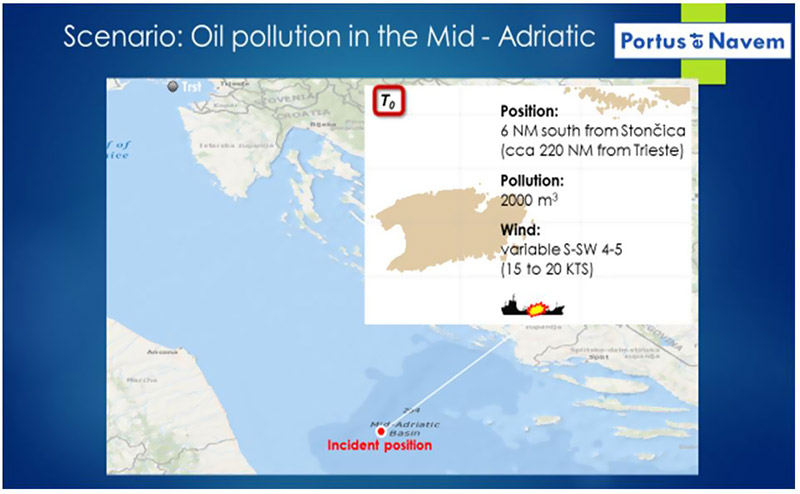
Figure 2. Incident position
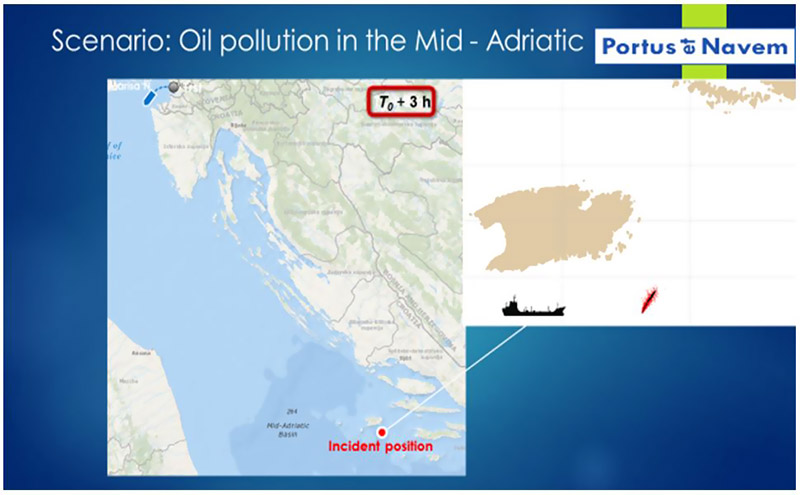
Figure 3. The situation 3 hours after the report of the ecological incident
In figure 3, the red dot represents the position of the incident. In the upper left corner you can see the position of the tanker MARISA N 3 hours following its departure from the Trieste port. The time of the incident is marked with T+3, and the black represents the ship from which the mineral oil was spilled. The oil stain is marked with the black and red colour and at this moment is still within the vicinity of the ship. The width of the stain at this point is 500 meters. In order to better track the movement of oil spill in the central Adriatic Sea, in a special (smaller) picture we provide an enlarged representation of the island of Vis so that we can in better detail show the movement of oil stains and how they spread. In the larger image, we observe the movements of the MARISA N tanker from Trieste towards the island of Vis. By the same analogy; the following pictures were also highlighted.
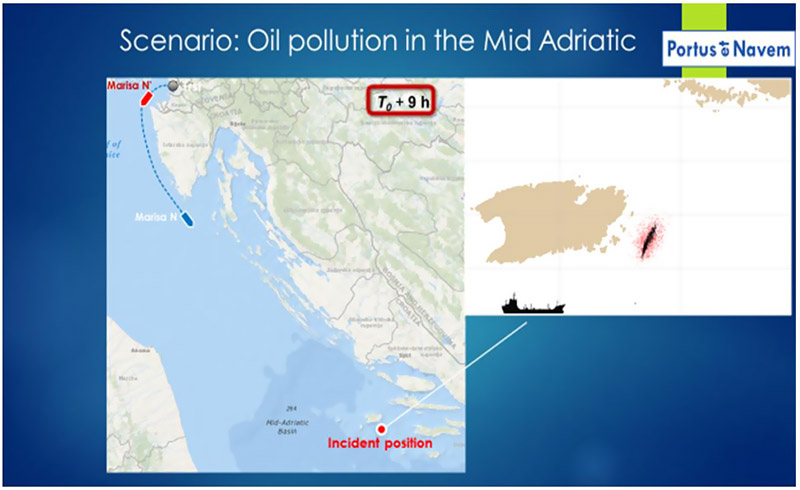
Figure 4. The situation 9 hours after the report of the ecological incident
As shown in Figure 4, the tanker MARISA N 9 hours following the report of the ecological incident is still quite far from the site of the incident and the width of the oil spill is now around 1500 meters. The oil stain moves towards the waters around the island of Hvar.
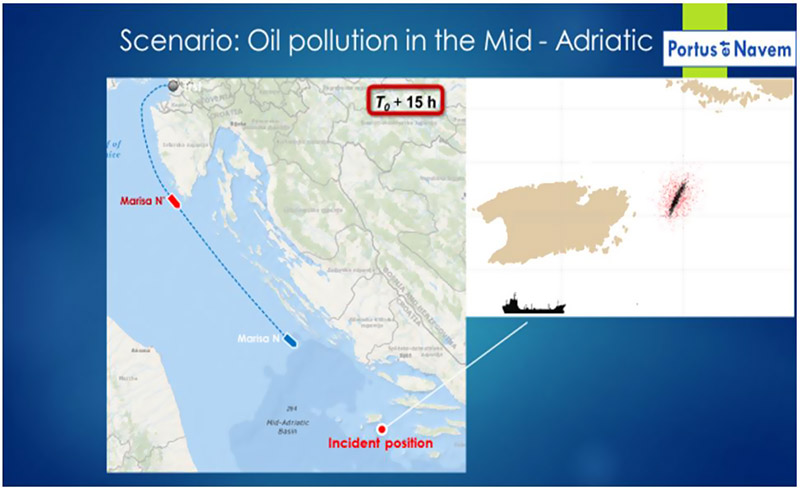
Figure 5. The situation 15 hours after the report of the ecological incident
15 hours has passed since the report of the incident and the width of the oil spill is 2500 meters. The tanker MARISA N is still relatively far from the site of the incident (Figure 5).
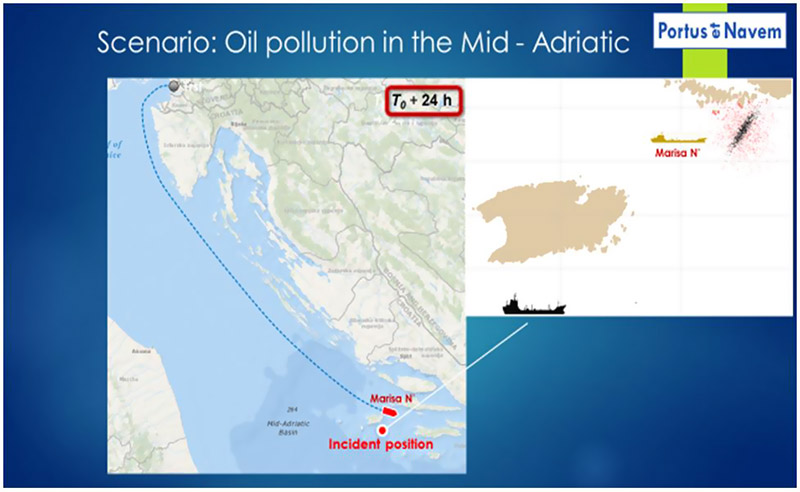
Figure 6. The situation 24 hours after the report of the ecologic incident
After 24 hours of the report of the ecologic incident, tanker MARISA N (marked in green on the smaller image, and red on the larger image) arrived at the site of the incident, meanwhile, the oil spill has already affected the island of Hvar and Pakleni islands (Figure 6).
The presented situations very clearly show that in such a scenario, if such an event were to ever occur, Croatia would suffer great economic and environmental damage. We would like to point out that about 80 million tons of dangerous goods are transported through the Adriatic sea annually, and that, for a lot of reasons, is no longer a question of whether such an event will happen, but when it will happen.
The main problem is that Croatia does not yet have the capacity to respond to such and similar open sea events.
In conclusion, we state that considering the Adriatic Sea is a half closed sea, the countries which share it also share common problems. The Adriatic countries (Albania, Bosnia and Herzegovina, Croatia, Italy, Montenegro and Slovenia) share many common problems and interests, and among the most threatening situations that these countries face are maritime incidents, especially pollution of the sea. The problem is particularly large when the pollution occurs near the shore, endangering the lives of the population, their daily activities, quality of life, their economy and environment including the plant and animal world and protected species. However, in spite of the common nature of dangers and potential catastrophes, these countries do not have coordinated, standardized or common systems and databases that include all information relevant to these issues (Bajić, 2012). It is necessary to integrate emergency data and procedures into one functional system (Stošic, 2016), which can easily be used for common cross-border action and response within national boundaries (Mladineo et al 2017:1-2).
Security of gas installations and platforms in the Croatian part of the Adriatic Sea
A. Critical infrastructure and gas fields
The law of critical infrastructures (NN 56/13) incorporates the legal acquisition of the European Union into the legislative system of the Republic of Croatia. This acquisition is located in the Directive Council 2008/114/EC from December 8th, 2008. According to the provisions of the Directive Council and the said act, in the management process it is necessary for the owners to create a risk analysis and/or the administrators security plan. Energy security is one of the segments of national security and that is why we have gone into the analysis of the security of gas plants and installations in the Adriatic Sea. Unlike the coal and oil market, natural gas will play a large role in global markets (World Energy Assessment, Energy and the Challenge of Sustainability, United Nations Development Program, 2000:35).
In relation to Croatian gas self-sufficiency, we state that in 2016, for the first time in the last 15-20 years, it has fallen below 50% and was only 44%. The prognosis of the current trend of a fall in production and growth in consumption predicts that by 2022, production may fall to 25%. During 2016, 24 percent less of natural gas was produced in the northern Adriatic fields than the year before and for the first time in 15-20 years the total shared consumption of domestic gas fell below 50%.
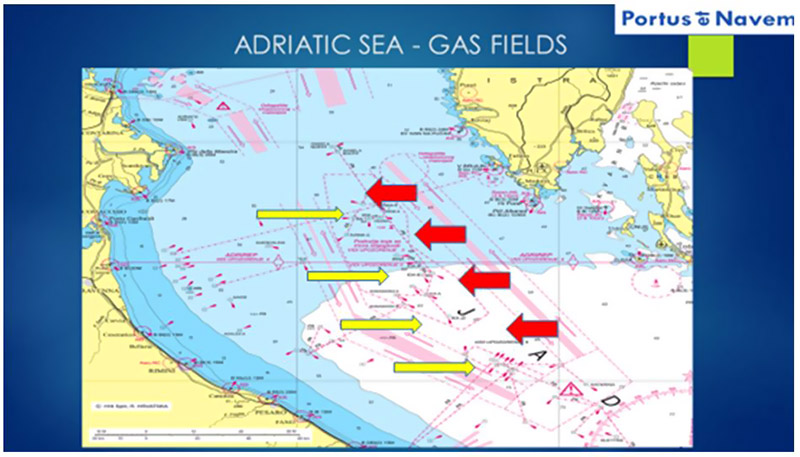
Figure 7. Maritime map showing the gas fields in the Adriatic Sea
Due to all the listed information, it is necessary to take into account the security of gas installations and platforms in the Adriatic Sea. Through long term monitoring of the general safety/security of gas installations and platforms in the northern part of the Adriatic Sea (observation with the participation of the Portus et Navem Ltd team of experts from 2008-2011 and 2012-2015) the underlying risks or threats to their security were clearly identified. The first and fundamental threat is expressed by the positions of the fields and installations considering the dense maritime traffic which has a growing tendency. The red arrows in Figure 7 indicate the marked separation zone of navigation, and the yellow arrows indicate “clusters” of gas platforms which are located near the separation zone. Following maritime traffic in this area through the above mentioned periods and during the last 5 months of 2018 (January-May), using the Marine traffic tool and electronic charts, we found that the situation compared to the previous period has not changed much and there have been numerous violations of the security zone within a 500 meter access radius of the platforms. In general terms, this poses a threat to possible maritime incidents - collisions, damage to underwater pipelines and the facilities itself. Numerous other accidents may also occur: the impact of a ship hitting a platform which can cause damage or destruction to the gas platform, as well as damage to the ship, its breakdown and uncontrolled release of mineral oils into the sea. Furthermore, a scenario of a major fire outbreak on offshore objects or ships which are in their vicinity is also a possibility. The next major threat to the security of gas plants and installations are the very intense fishing activities within the gas fields, especially in the forbidden perimeter of 500 meters around the gas platform, which on several occasions has already had the effect of damaging submarine pipelines caused by the use of fishing gear on the bottom of the sea and below the surface of the bottom of the sea. On several occasions such damages have caused major bottlenecks in production and supply of gas and material costs, as well as adverse affects on marine flora and fauna.
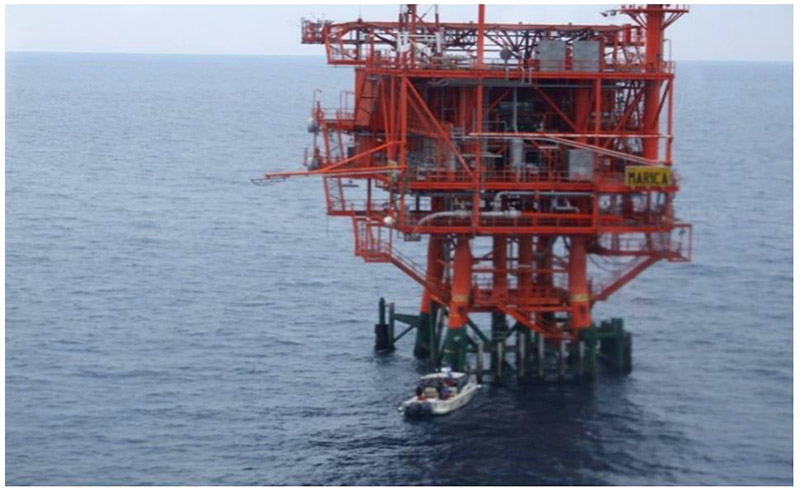
Figure 8. Gas platform Marica
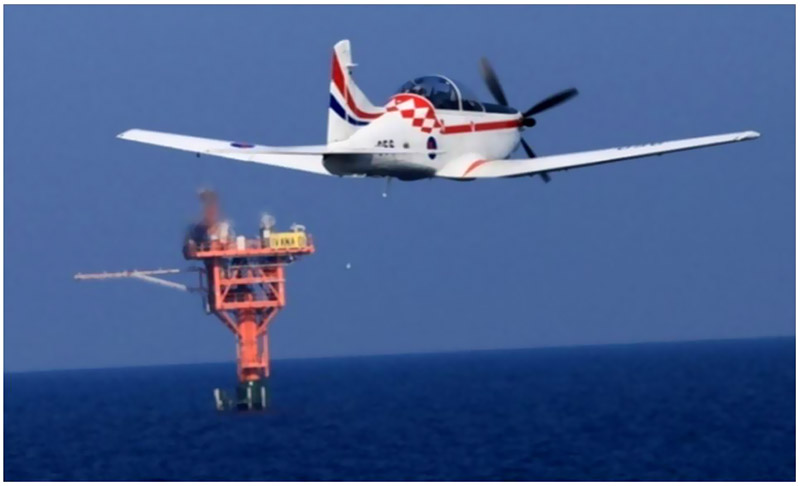
Figure 9. Airborne gas control in the North Adriatic Sea
Many scenarios of endangering the security of gas plants and installations to date are not adequately reflected by legislators nor owners and operators of gas exploitation so there remain numerous other security risks. In the provided analysis we have noticed a lack of helicopter decks on the gas platforms which have a human crew. In the segment of threats of terrorist attacks, among other things, there was a lack of joint training of possible scenarios of protection and elimination of possible breakdowns and damage to the installations, as well as rapid evacuation and medical treatment of injured persons.
On July 3rd, 2015, the Croatian parliament proclaimed the Law on the safety of offshore exploration and exploitation of Hydrocarbons (NN 78/15). This act regulates important safety issues that have not yet been adequately considered or applied thus far. This current state of gas security is described at the time of writing this paper (May 2018), and how as well as how much the coastal security coordination will “force” operators, owners or concessionaires to raise the level of security of offshore objects remains to be seen. The thought is to primarily make: reports of major dangers, offshore object security plans, and other reports such as those pertaining to fires, explosions, diversion, sabotage, etc.
It will be particularly interesting to analyze the documents related to sudden events, major accidents, and large dangers in the part of the design and implementation of major accident scenarios in the offshore facility security plan. Furthermore, it will be interesting to analyze how the following areas will be dealt with: plans and procedures in the case of terrorist threats or attacks on objects, spaces or contents of gas platforms, reacting after receiving a report of the possible set up of an improvised explosive device; plans and procedures: supervision and protection of the prescribed perimeter security around the offshore facility, in the case of sudden sea pollution, in the case of evacuation of the offshore facility, natural disasters and elemental disasters as well as numerous other security issues and procedures.
The provisions of this act for existing offshore facilities will be applied from July 19th, 2018, meaning that we will quickly get the answers to the questions raised here.
In the research we are about to publish, we will analyze all questions and problems we have outlined here and propose further concrete measures to raise the level of security of gas installations and platforms in the Adriatic Sea.
3. Security of cruise ships as a security challenge
We have become witnesses of the real invasion of an increasing number of large cruise ships in our waters and ports. This is the fruit of a global explosion of a relatively new product of the tourism industry. Obviously, we have accepted to be a part of this growing phenomenon. The evidence suggests that some of our historical cities on the coast and islands are now under the siege of the cruise ships. Data indicate that there were 850 cruise liners with 1 000 000 passengers in 2017. Moreover, it is announced that in 2018 this number could increase by 30%. Although such traffic brings the financial benefit to our total tourist product, in this paper we will address simultaneous threats to overall maritime security. The increase of cruise ships number in our waters, and especially the ports of historical cities, leads to growing risks of possible incidents with serious and uncertain consequences. It is therefore necessary to be aware of the potential challenges and issues that need to be considered in cases of maritime disasters.
The aim of this paper is to perform risk analysis based on realistic scenarios of threats. It is our wish to point out procedures that can improve the overall maritime security, the protection of our seas and historical cities on the coast and the islands from the great negative consequences of the possible maritime incidents and disasters that involve cruise ships.
A. Risks, threats and scenarios of general maritime security
Risk is the result of threats with negative consequences on a vulnerable system (Haimes, 2006:293). Cruise ships and passenger ferries are particularly vulnerable, due to the fact that a large number of people are restricted to one physical space (Warouw, 2005). In addition, they navigate to pre set and publicly available rows of navigation, which is why they are susceptible to interception after their departure.
In order to understand the reality of threats which target cruise ships or come from them, it is first necessary to look at what can actually happen to that technological giant?
For this purpose it is necessary to generate realistic scenarios of possible incidents. Here are some of the possible scenarios:
- Major fire outbreak on a ship at the open sea, approaching the port or in the port itself
- Grounding the ship
- An explosion on the ship as a result of a technological error or a terroristic act
- Massive unknown illness (virus) among passengers of the ship
- Ship abduction - hostage takeover
Once we have realized what the realistic scenarios and threats may be, a whole range of questions are opened that need to be answered. Further, we list the problems which are placed in front of the country of the relative port in the city within which the cruise ship enters or resides.
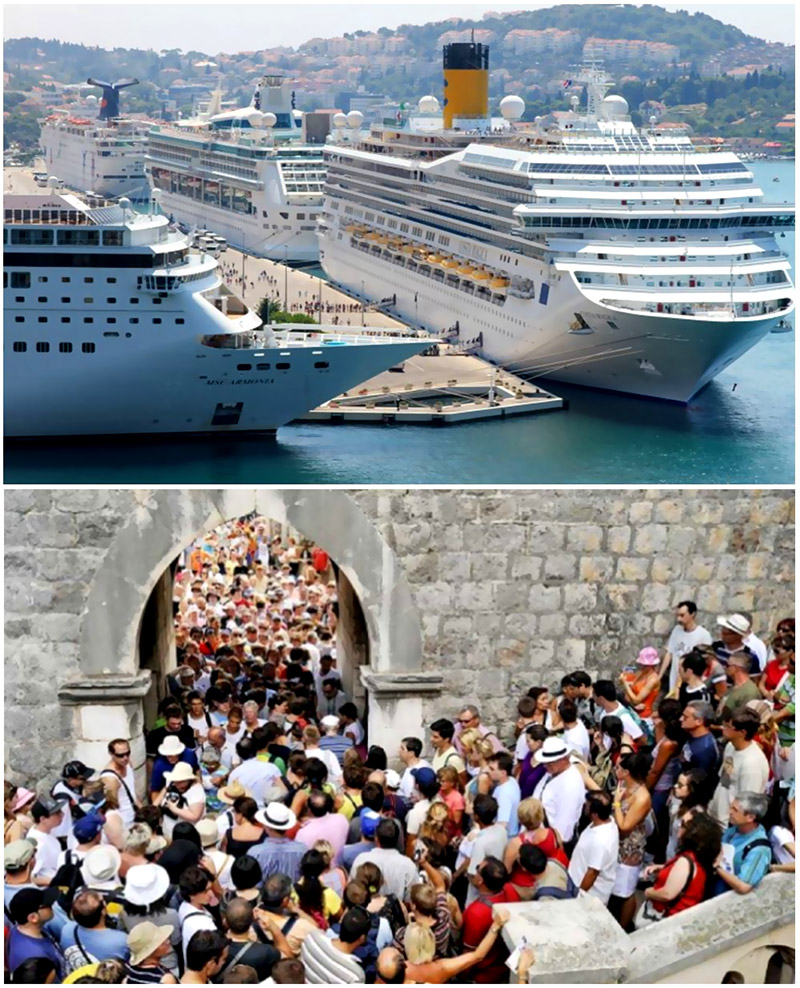
Figure 10. Overcrowding the port and the city of Dubrovnik with cruise ships and tourists
B. Basic organizational and procedural challenges
It should be noted that mass rescue operations everywhere in the world require prepared answers and continuous training, which for us, is unfortunately not the case.
Furthermore, the following questions are opened:
- Who is the carrier of the crisis resolution operation?
- What is the chain of command like?
- How is the control panel structured?
- Who contains the equipment and personnel to solve the crisis?
- What are the capabilities and capacities available to deal with crisis situations?
- What is the reaction time to the crisis - the degree of readiness (“golden hour”)?
- What is the degree of training and experience of crisis rescue participants?
It is difficult to find the answer to a large number of questions and we conclude that a whole series of factors are missing in order to effectively counteract the crisis situation.
With analysis through the operational work in the port security sector in the Republic of Croatia, through discussions with authorities in the area of crisis resolution and analysis of positive laws and by-laws, we have determined how to continue further.
C. Own limitations and disadvantages
Bearing in mind all the spatial, navigational and hydro meteorological complexities of our opportunities, we have identified the following main drawbacks:
- Problems of legislative nature
- Inadequate procedures and insufficient plans
- Limited resources (evacuation and rescue)
- Lack of capacity (ship and equipment) for offshore action at the national level
- Unsatisfactory degree of readiness for crisis management (reaction time)
- Restrictive and insufficient infrastructure and capacities of historic cities
- The lack of an infrastructure which is constantly ready for the reception and medical care of a large number of people in a short period of time
D. Recommendations for improving the current situation
Following all of the above, we have made recommendations for raising the level of the tourist segment of cruise tourism as follows:
- Systematically build a complete integrated incident management system
- Arrange existing plans and procedures in ports open to international traffic
- Along with the constant obligation of pilotage, provide mandatory assistance of the necessary number of tugs in Croatian ports
- Establish a continuous duty (24/7) and readiness (stand-by) fire-fighting ships - tugboats for maneuvering and setting up dams to prevent pollution of the sea
- Ensure constant availability of equipment and teams for the reception and disposal of large numbers of people (athletic halls, or other suitable public facilities)
As a conclusion of everything in the segment of cruise control, we must point out that cruise tourism is both a chance as well as a challenge. Therefore, this is a new phenomenon which searches for a new approach, new scientific and professional research showing that integrated managing of gains and risks is the key to success.
Conclusion
It is undisputed that the Adriatic Sea is extremely important for Croatian tourism and the economy as a whole, however, its safety is not at a satisfactory level. In the first section of this paper, we clearly indicated how Croatia does not have an adequate response to greater amounts of environmental pollution on the open sea and that Croatia would suffer major economic and environmental damage if the described events occurred today. We further elaborated that protecting important critical offshore infrastructures must be at a much greater level than it is today. In the many scenarios described in the second section of this paper, gas plants and installations could suffer major damage, and natural gas production in Croatia could sink into a major crisis. The industry of cruise tourism, described in the third section of the paper, represents a major security challenge for Croatia which does not at this point in time have precise answers to numerous security issues in this segment. Urgent and numerous improvements are required in all of these segments in order to achieve optimal security levels. We will continue with this research in all the segments described throughout this paper and continue to present the results of our research, as well as propose specific measures for raising the overall security of the Adriatic Sea.
References
1. Action plan for an integrated maritime policy of the European Union, 2007.
2. An Integrated Maritime Policy for the European Union – BLUE BOOK, 2007.
3. Bajić, M. (2012). Airborne Hyperspectral Surveillance of the Ship-based Oil Pollution in Croatian Part of the Adriatic Sea. Geodetski list, 66(89), 77–100.
4. Buzan, B.; Hansen, L. (2009). The Evolution of International Security Studies. Cambridge: Cambridge University Pres.
5. Commission Green Paper: "Towards a future Maritime Policy for the Union: a European Vision for the Oceans and the Seas, 2006 .
6. Communication and action plan of the commission with the aim of establishing the European Maritime Free-Standing Space without Barriers, 2009.
7. Communication on a European Ports Policy, 2007.
8. Communication from the Commission to the Council, the European Parliament, the European Economic and Social Committee and the Committee of the Regions - Guidelines for an integrated approach to maritime policy: towards best practice in integrated maritime governance and stakeholder consultation, 2008.
9. Council Directive 2008/114/EC on the identification and designation of European critical infrastructures and the assessment of the need to improve their protection, 2008.
10. Drent, M., Homan, K., Zandee, D. (2013). Case Study on Maritime Security. Civil–Military Capacities for European Security, Clingendael Report, December 2013.
11. EU Maritime Security Strategy, 2014.
12. European Security Strategy, 2003.
13. EU Marine Strategy Framework Directive, 2008.
14. Guidelines for the preparation delivery of the Coordination document for the safety of coastal exploration and exploitation of hydrocarbons (Zagreb, November 2017).
15. Haimes, Y.Y. (2006). On the Definition of Vulnerabilities in Measuring Risks to Infrastructures. Risk Analysis, Vol. 26, No. 2. 293–296.
16. Intervention plan for sudden pollution of the sea in the Split-Dalmatia County (Assembly of Split-Dalmatia county, 2010).
17. Law of critical infrastructures (NN 56/13).
18. Law on the safety of offshore exploration and exploitation of Hydrocarbons (NN 78/15).
19. Malik, S. (2015). Constructing security. In: Hough, P.; Malik, S.; Moran, A.; Pilbeam, B. International Security Studies: Theory and practice. New York/ Abingdon: Routledge, 72-84.
20. Marine development strategy and integral maritime policy of the Republic of Croatia for the period 2014-2020.
21. Mladineo, N., Mladineo, M., Knezic, S. (2017). Web MCA-based Decision Support System for Incident Situations in Maritime Traffic: Case Study of Adriatic Sea, The Journal of Navigation, page, The Royal Institute of Navigation. 1-23.
22. National Intervention Plan of intervention in case of sudden pollution of the sea of the Republic of Croatia (NN 92/08).
23. Prodan, T. (2017). Maritime terrorism and resilience of maritime critical infrastructures. National Security and the Future, Volume 18, No. 1-2. 101-122.
24. Stošic, M. (2016). Our inconclusiveness to respond on incidents at sea is alarming (in Croatian - Naša neuvjerljivost u rješavanju incidentnih situacija na moru zabrinjava). http://www.defender.hr/naslovnicaizdvojeno/nasa-neuvjerljivost-u-rjesavanju-incidentnih-situacija-na-moru-zabrinjava, Accessed: 14 May 2018.
25. Strategic plan of the Ministry of the sea, transport and infrastructure for the period 2017-2019.
26. Strategic goals and recommendations for the EU’s maritime transport policy until 2018, 2009.
27. Tadej, P. (1983). Mogućnosti i perspektive promatranja sa sudjelovanjem. Revija za sociologiju, XIII (1-4). 81-94.
28. United Nations Convention on the Law of the Sea, 1982.
29. Warouw, M. (2005). The Threat Against Maritime Assets: A Review of Historical Cases, Operational Patterns and Indicators, unpublished paper prepared for the Institute of Defense and Strategic Studies.
30. WHITE BOOK: European transport policy for 2020: Time of Decision, 2001.
31. Williams, D. P. (2008). Security Studies: An Introduction. In: Williams, D. P. (ed.) Security Studies: An Introduction. London and New York: Routledge, Taylor & Francis Group. 1-12.
32. Wolfers, A. (1962). National security as an ambiguous symbol. Political Science Quarterly. 67 (4). 481-502.
33. World Energy Assessment, Energy and the Challenge of Sustainability, United Nations Development Program, 2000.
34. Yin, R.K. (2007). Case Study Research: Design and Methods. Studija slučaja: dizajn i metode. Zagreb: Fakultet političkih znanosti Sveučilišta u Zagrebu.